What do you know about eucalyptus trees? One commonly known fact is that eucalyptus plants are native to Australia. Not only this, but they are considered endemic – meaning they grow in that specific region only.
If a koala comes to mind when you hear the word eucalyptus, then you’ve heard right. Much like great pandas have evolved to digest bamboo, koalas are equipped to digest harsh eucalyptus leaves. It comprises a major portion of their diet – hence the association. Some have said that they, uh, have a little fun with eucalyptus. The low nutritional value of the leaves means that they require more sleep than other animals. If their eyes look a little red and glassy, well, I swear they’re just sleepy. Koalas are super cute, but we’re here to discuss so much more!
When it comes to this magnificent genus of trees commonly called gum trees, there’s a lot to know. On the dull-ish end of the spectrum, we have facts about the word “eucalyptus.” It comes from a combination of Latin (EU meaning “from”) and Greek (kalyptos meaning “covered” and kalyptein meaning “to conceal”) used to describe the seed pod. Good to know, but not the kind of info worth sharing at your next dinner party, right?
Thankfully, there’s more to this millennia-old tree.
Whether you’re a newbie or a eucalyptus expert, read on! You could learn 7 lesser-known and somewhat remarkable facts about eucalyptus trees. Did you know that eucalyptus flooring is a thing? You won’t believe the benefits of eucalyptus flooring!
1. Eucalyptus Flowers Have No Petals
From a distance, the flowers on most species of eucalyptus trees look like fluffy bursts of color, kind of like a dandelion flower gone to seed.
Get closer, and you’ll see why. These breathtaking blossoms have no petals. The entire “bloom” consists of hundreds of stamens emerging from a central cone-like bud.
They come in a range of colors, including white, bright red, vibrant orange, deep pink, and lime green.
The abundance of stamens translates to an abundance of pollen. And, eucalyptus trees can use as much pollen as possible. They have few natural pollinators because of high concentrations of cineole. (See #3 on this list for more about that). Most often, eucalyptus trees count on the multitude of stamens for self-pollination.
2. Square Stems and Uncommon Leaf Formations
Small branches of eucalyptus trees and shrubs are popular in flower arrangements. Why? In part, it’s because of their sturdiness and the visual appeal of their leaf formation.
While most trees have round stems, eucalyptus stems are closer to the square. The natural advantage of this shape is unclear, but that doesn’t detract from its beauty.
What also makes the stems and branches of eucalyptus trees compelling is the way the leaves grow. They grow in pairs on opposite sides of the stem. But the neighboring pairs of leaves are at right angles to each other. So a pattern of A-C, B-D, A-C, B-D, etc., emerges where A, B, C, and D are the four sides of the stem.
There are other plants with this kind of leaf formation, but it isn’t common.
3. Cineole: The Secret Ingredient
Eucalyptus essential oil has been used in Indigenous Australian medicine as an antibacterial and anti-fungal agent for centuries. In India’s Ayurvedic medicine, it’s often used in the treatment of respiratory ailments. In the 17th century England, it was used to disinfecting hospitals.
Why? Because the tree’s leaves and bark contain high concentrations of cineole.
Cineole is a colorless, liquid organic compound. It’s sometimes also called eucalyptol because there’s so much of it in eucalyptus trees and shrubs. The fragrance of eucalyptus is primarily that of cineole.
We don’t want to sound like a high school chemistry tutorial, so let’s say that cineole is the eucalyptus’ secret weapon against predators.
Only the koala bear, ring-tail possum, and a few insects can eat eucalyptus leaves and bark. No other creature, including humans, can withstand the high levels of cineole. In fact, in high concentrations, it’s toxic. That’s why it makes an effective and natural insect repellent.
Clinical research has proven the anti-bacterial, antiseptic, and anti-fungal properties of cineole. Using eucalyptus essential oil in topical wound treatment, skincare, and other disinfecting applications makes sense.
4. Eucalyptus Trees Can Help Prevent Malaria
It’s no secret that eucalyptus trees love water. They thrive in marshy and flooded areas.
That’s why they’re sometimes planted in areas with high malaria rates.
Malaria, a disease that is found on every continent but Antarctica (another factoid to impress your dinner companions), relies on a specific kind of mosquito for its survival. The malaria parasite lives in female mosquitoes who bite humans. During the bite, the malaria parasite is transferred to the human.
And what do we know about mosquitoes? They love standing water. From swamps to puddles in the backyard, mosquitoes need stagnant water to breed.
In areas of the world with high populations of malaria-carrying mosquitoes, eucalyptus trees are sometimes planted. Not only do they reduce the amount of stagnant water, their secret weapon, cineole, but they help also reduce mosquito populations.
5. Eucalyptus Trees Can Help Manage Wastewater Issues
Much like using eucalyptus trees to help manage malaria, there’s an ongoing exploration into using this remarkable tree to reduce wastewater issues.
In several parts of the world, wastewater carrying heavy metals, bacteria, and other toxins into the groundwater is a concern for agriculture. In response, environmental engineers and agri-forestry professionals plant eucalyptus trees in strategic locations. There’s a wealth of evidence that the eucalyptus absorbs and filters many elements we don’t want in the water used on crops.
While there’s still more research needed to know the right balance of these trees to agricultural land, the outlook is promising and is another remarkable fact about the gum tree.
6. Eucalyptus Wood Makes the Best Didgeridoos
Didgeridoos are a long, trumpet-like instrument with a deep history among the Indigenous people of Australia. Traditionally, it’s played during ceremonial dancing and singing. Today, it’s also played for recreation.
But no matter why it’s played, many who know about these things contend that the best didgeridoos are made from eucalyptus wood.
Traditional production involves finding a tree trunk or major branch that’s been hollowed out by termites. The trunk or limb is then cut down, cleaned inside, and stripped of its bark. The hardness of eucalyptus wood helps create pleasing acoustics when played.
7. Eucalyptus Grows Super Fast
One of the reasons it’s an environment-friendly choice is the rate at which the trees grow. Many varieties of these trees reach early maturity just ten years after planting.
Compared to other hardwoods, they have fast growth, as traditional hard woods can take 18-25 years to reach early maturity. Provided they have enough water and are in the right climate, eucalyptus trees are a renewable resource. That’s a remarkable and important fact for the flooring industry’s sustainability and for consumers who want to make better choices for the environment. Much like bamboo flooring, eucalyptus is known as a super sustainable flooring option too.
Whether you use eucalyptus trees for essential oils, didgeridoos, or flooring, you get value. And in ten years, someone else can also enjoy the benefits of another eucalyptus tree.
So, how many of these 7 facts about eucalyptus trees did you know? Do you use eucalyptus or have it in your home? Let us know in the comments!
If you would like to see a sample of our gorgeous and durable eucalyptus flooring, click on the box below. If you have any questions, please call one of our flooring professionals today at (866) 710-7070.
Last Updated: 1/7/2021

About the Author
Jen is your go-to guru for crafting a cozy, green cocoon. 🪴 Her dive into sustainable building wasn’t just about saving the planet—it started as a mission to make family movie nights eco-friendly (and to ensure the popcorn was the only thing getting heated!). With a knack for breaking down the jargon, Jen turns eco-lingo into everyday language. Swing by the Green Living blog for a mix of earth-loving advice and home improvement hacks. Whether you’re just dipping your toes into green waters or you’ve been swimming in the deep end of DIY projects, Jen’s here to guide, giggle, and remind you that every eco-choice is a step towards a planet that thanks you… and maybe even sends a rainbow your way! 🌈

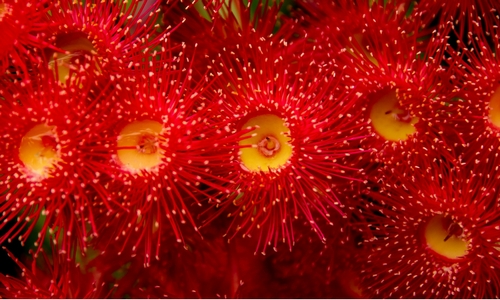

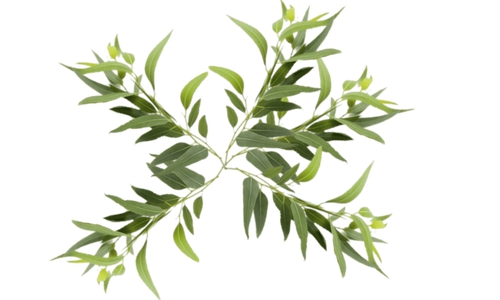
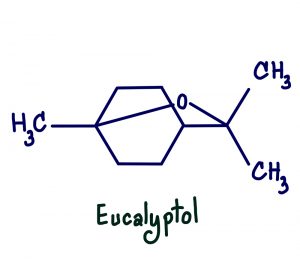
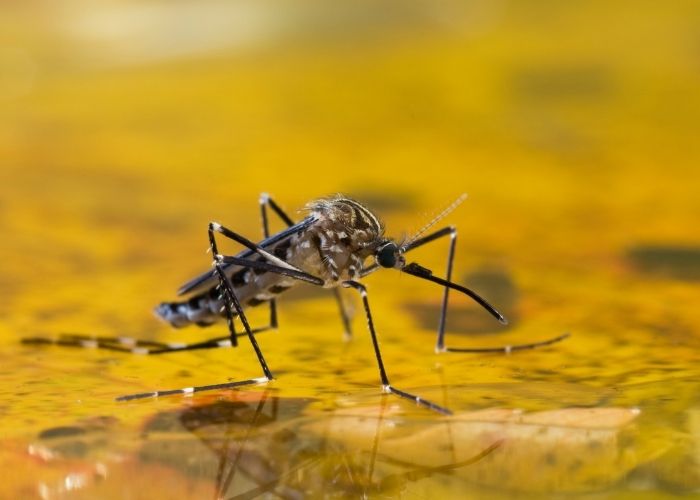
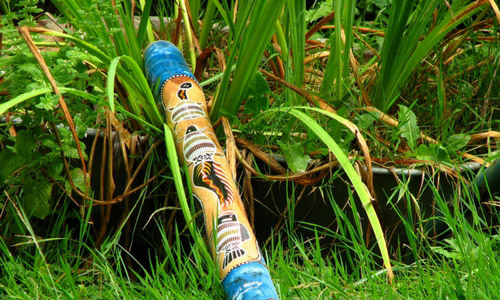

Appreciate this website. We have two large trees flowering trees in our nearby park. I didn’t even know what they were; color looked a lot like something we saw from a distance in Costa Rica. Clicked on your site and discovered I do know a bit about them, even if I couldn’t identify them! I know of some medicinal uses and the insect repellent aspect. Didgeridoos part a fun surprise! Thank you.
Donetta, glad we could help. Have a great day!
My tree sheds leaves all year round. Is that common or is it dying?
It still flowers white flowers.
My 15 years old E. tree dfoesn’t flower or doesn’t shed leaves every years but it happens every 2nd year maybe? One year, it shed lots of bark ! smelled lovely in a bone fire! It is thriving on Irish marshland.
Fascinating facts ! beautiful tree !
Unfortunately it is growing very big and causing worries to neighbors.
Hi Donna,
They do grow big and beautiful, don’t they? You might be able to consult an arborist to safely trim it back so it doesn’t bother your neighboors. Glad you enjoyed the article!
thank you a lot for the article . i am planning to start my plantation soon
Hi Jane,
That’s exciting! I hope everything goes smoothly for you!
Hello The Greener Living Blog!
Thank you so verry much for this infromation site, i have always wanted to know about eucalyptus trees, aren’t they so fascinating?! I love these types of trees, they are my favorite. I used to eat them all the time but with this imformation i learnt that they are poisonous so maybe i shouldn’t be eating them!! :/ you know you love me xoxo eucalyptus lover!!!
Hi Gurtrude,
Thank you for reading! They really are wonderful trees, aren’t they? I’ve never tried eating the leaves, but now that we know their poisonous maybe I will have to pass! Have a great day!
I was glad to find your website. I lead guided tours at the Boyce Thompson Arboretum near Superior, Arizona. The arboretum has a large eucalyptus collection; has a wide variety of the species. Your information is the kind visitors like to hear when they go on the guided tours.
Hi Sylvia,
Glad we could provide you with some additional information on eucalyptus that may benefit you at work! Thanks for reading :)
Do eucalyptus bloom every year? Are there male and female trees? We have two eucalyptus on our property each is over 50 feet tall. Only one blooms as you described.
Hey Gerhard,
Eucalypti are perennial plants, so you should see them bloom every year! The genus of eucalyptus is broad, and there are many different species within it. While the red bloom has become known as the iconic eucalyptus flower, there are a variety of different patterns that the trees bloom in. Red Gum & Willow-Leaved Peppermint are two species that are common in the U.S. – and grow as tall as your own! These species bloom in smaller cluster of flowers that are often white. Perhaps you have two different species of trees!
Could you please tell me eucalypytusoil is found in the roots as well as the bark? Also, if used as flooring does this have any aroma of the eucalyptus?
Cineole – or eucalyptol – is primarily extracted from the leaves rather than roots; however, eucalyptus oil is made up of several chemical compounds beyond cineole. Eucalyptus bark is known to secrete natural chemicals as does the sap from the tree. Eucalyptus flooring is sealed & finished, so it is unlikely to give off such odors. Many people have recommended eucalyptus oil solutions as eco-friendly floor cleaners, and they are known to give off a faint, pleasant aroma. Be sure to consult with the maintenance recommendations of your floor’s manufacturer before trying any new cleaning products!
I ‘d no idea that eucalyptus is a hardwood so had not realised how useful it may be. Will certainly consider this in future.
Eucalyptus is a “seasonal evergreen”, meaning that it will shed leaves year-around., more during some seasons than others. And those leaves are a real pain if you have a large tree (trunk diameter ~60cm/25”) in your garden. For the reasons mentioned in the main article, the leaves do not break down easily in the absence of Koala Bears and need to be raked up, sucked up and disposed of (not as compost or mulch, either). Another thing: it may be a hardwood, but the timber is extremely wet and must be seasoned for ages to be used as either timber or firewood.